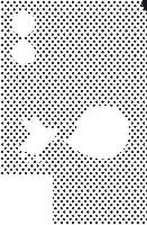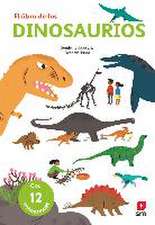Danish Design Heritage and Global Sustainability
Autor Ditte Lysgaard Vinden Limba Engleză Hardback – 23 oct 2023
| Toate formatele și edițiile | Preț | Express |
|---|---|---|
| Paperback (1) | 302.83 lei 3-5 săpt. | +18.86 lei 4-10 zile |
| Taylor & Francis – 23 oct 2023 | 302.83 lei 3-5 săpt. | +18.86 lei 4-10 zile |
| Hardback (1) | 1002.80 lei 6-8 săpt. | |
| Taylor & Francis Ltd (Sales) – 23 oct 2023 | 1002.80 lei 6-8 săpt. |
Preț: 1002.80 lei
Preț vechi: 1222.94 lei
-18% Nou
Puncte Express: 1504
Preț estimativ în valută:
191.92€ • 199.83$ • 162.19£
191.92€ • 199.83$ • 162.19£
Carte tipărită la comandă
Livrare economică 10-24 martie
Preluare comenzi: 021 569.72.76
Specificații
ISBN-13: 9781032198217
ISBN-10: 1032198214
Pagini: 246
Ilustrații: 18 Line drawings, black and white; 15 Halftones, black and white; 33 Illustrations, black and white
Dimensiuni: 156 x 234 x 16 mm
Greutate: 0.53 kg
Editura: Taylor & Francis Ltd (Sales)
ISBN-10: 1032198214
Pagini: 246
Ilustrații: 18 Line drawings, black and white; 15 Halftones, black and white; 33 Illustrations, black and white
Dimensiuni: 156 x 234 x 16 mm
Greutate: 0.53 kg
Editura: Taylor & Francis Ltd (Sales)
Notă biografică
Ditte Lysgaard Vind is a renowned circular economy and design expert and practitioner, based in Denmark. Ditte is known for pioneering new materials as well as business models while sharing the knowledge gained from practice through teaching and thought leadership. She is the founder of The Circular Way and the Chairwoman of The Danish Design Council; a member of the Executive board of The Royal Danish Academy of Fine Arts Schools of Architecture, Design and Conservation; as well as the global SDG innovation lab UNLEASH. Ditte previously co-founded Lendager The Circular Way a subsidiary of Lendager Group. Ditte is also the co-author of A Changemakers Guide to the Future (Lendager Group, 2018).
Cuprins
1. Design in the Anthropocene 2. Learning from Danish Design 3. Systems Design in the Anthropocene 4. The Troubles We are in 5. Partnering with Life: The Essence of Regeneration 6. Theory Meets Practice and Magic Happens 7. Manifesto: Design in the Anthropocene 8. The Purpose of Business is to Solve Problems 9. The Circular Way 10. Nature¿s Playbook 11. Technology, Friend or Foe 12. Plastic not so Fantastic 13. Building the Circular Way 14. Designing our Cities the Danish Way 15. Copenhagenize: Designing Regenerative Mobility 16. Trust the Future, if We do the Work to Create it
Recenzii
“Ditte Lysgaard Vind writes eloquently about the role of Danish design in Denmark’s journey toward a regenerative future, and how global suitability pressures have helped shaped positive action in places like Copenhagen. It’s a great read and resource for anyone who wants to understand how design can help us live better on this planet.”
Michael H. Ramage, Professor of Architecture and Engineering, and Director at Centre for Natural Material Innovation, University of Cambridge, UK
"Simply put, as manifested in this book by intelligent design, we can harness the extraordinary powers of business as a source of good, and make sure we are incentivised to keep on the trajectory of creating a regenerative society for all to thrive in, and to ultimately ensure a liveable and sustainable future for businesses, as well as the planet and humankind. I say let's choose light over darkness, wisdom over foolishness, and leave the winter of despair behind to enter the spring of hope. This book is a good place to start."
Jim Hagemann Snabe, Chairman of Siemens, boardmember of World Economic Forum and adjunct professor at Copenhagen Business School, Denmark
"This thought-provoking book showcases how design can build a regenerative society, with practical examples from Danish design, questions on systems thinking, and applications of circular economy principles. The author skilfully demonstrates the transformative power of design for a better future."
Catherine De Wolf, Professor, Circular Engineering for Architecture, ETH Zurich, Switzerland
"This is a book of planetary urgency; a playbook for industries, universities, countries, and is is the epitome of a nation's reputation and legacies."
Richard Hsu, Professor of Practice at Tongji University School of Design and Innovation, China
Michael H. Ramage, Professor of Architecture and Engineering, and Director at Centre for Natural Material Innovation, University of Cambridge, UK
"Simply put, as manifested in this book by intelligent design, we can harness the extraordinary powers of business as a source of good, and make sure we are incentivised to keep on the trajectory of creating a regenerative society for all to thrive in, and to ultimately ensure a liveable and sustainable future for businesses, as well as the planet and humankind. I say let's choose light over darkness, wisdom over foolishness, and leave the winter of despair behind to enter the spring of hope. This book is a good place to start."
Jim Hagemann Snabe, Chairman of Siemens, boardmember of World Economic Forum and adjunct professor at Copenhagen Business School, Denmark
"This thought-provoking book showcases how design can build a regenerative society, with practical examples from Danish design, questions on systems thinking, and applications of circular economy principles. The author skilfully demonstrates the transformative power of design for a better future."
Catherine De Wolf, Professor, Circular Engineering for Architecture, ETH Zurich, Switzerland
"This is a book of planetary urgency; a playbook for industries, universities, countries, and is is the epitome of a nation's reputation and legacies."
Richard Hsu, Professor of Practice at Tongji University School of Design and Innovation, China
Descriere
Descriere de la o altă ediție sau format:
This book offers valuable insight into the origins of the much-celebrated Danish design tradition and how it can be employed to create design solutions to address today's environmental crisis using the planetary boundaries as positive creative constraints.
This book offers valuable insight into the origins of the much-celebrated Danish design tradition and how it can be employed to create design solutions to address today's environmental crisis using the planetary boundaries as positive creative constraints.














